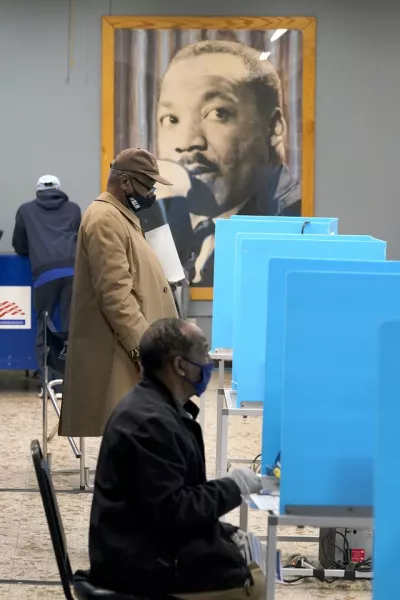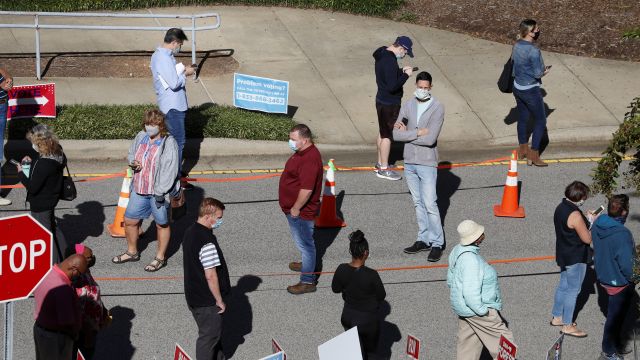The total represents 12% of the all votes cast in the 2016 presidential election, even as eight states are not yet reporting their totals and voters still have more than two weeks to cast ballots.
Americans’ rush to vote is leading election experts to predict that a record 150 million votes may be cast and turnout rates could be higher than in any presidential election since 1908.
“It’s crazy,” said Michael McDonald, a University of Florida political scientist who has long tracked voting for his site ElectProject.org.
Mr McDonald’s analysis shows roughly 10 times as many people have voted compared with this point in 2016.
“We can be certain this will be a high-turnout election,” Mr McDonald said.
So far the turnout has been lopsided, with Democrats outvoting Republicans two to one in the 42 states included in The Associated Press count.
Republican have been bracing themselves for this early Democratic advantage for months, as they have watched President Donald Trump rail against mail ballots and raise unfounded worries about fraud.
Polling, and now early voting, suggest the rhetoric has turned his party’s rank-and-file away from a method of voting that, traditionally, they dominated in the weeks before election day.
That gives Democrats a tactical advantage in the final stretch of the campaign.
In many critical battleground states, Democrats have “banked” a chunk of their voters and can turn their time and money toward harder-to-find infrequent voters.

But it does not necessarily mean Democrats will lead in votes by the time ballots are counted.
Both parties anticipate a swell of Republican votes on election day that could, in a matter of hours, dramatically shift the dynamic in the race for the White House between Mr Trump and Joe Biden.
A number of factors, from rising virus infections to the weather, can impact in-person turnout on election day.
That is why, despite Mr Trump’s rhetoric, his campaign and party are encouraging their own voters to cast ballots by mail or early and in-person.
The campaign, which has been sending volunteers and staffers into the field for months despite the pandemic, touts that it has registered more voters this year than Democrats in key swing states like Florida and Pennsylvania, a sharp reversal from the usual pattern as a presidential election looms.
But it has had limited success in selling absentee voting.
In key swing states, Republicans remain far less interested in voting by mail.

In Pennsylvania, more than three-quarters of the more than 437,000 ballots sent through the mail so far have been from Democrats.
In Florida, half of all ballots sent through the mail so far have been from Democrats and less than a third of them from Republicans.
Even in Colorado, a state where every voter is mailed a ballot and Republicans usually dominate the first week of voting, only 19% of ballots returned have been from Republicans.
“This is all encouraging, but three weeks is a lifetime,” Democratic data strategist Tom Bonier said of the early vote numbers.
“We may be midway through the first quarter and Democrats have put a couple of points on the board.”







